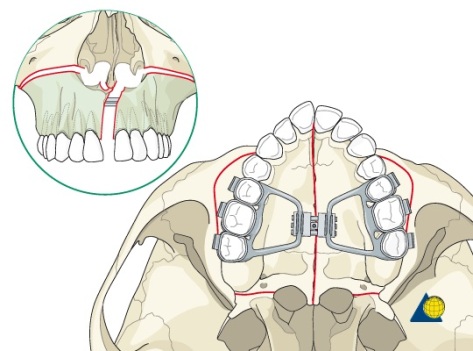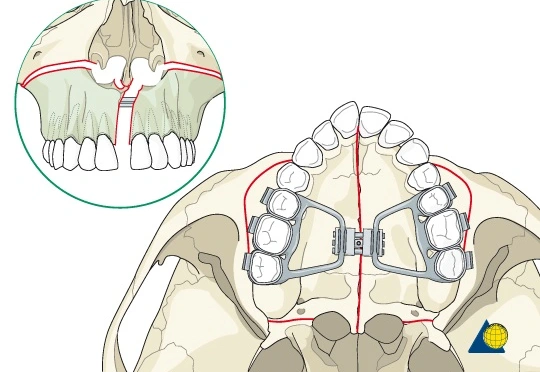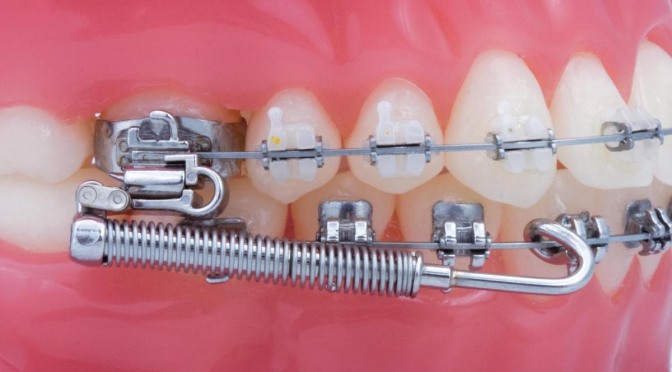Surgically Assisted Rapid Palatal Expansion
Summarized by : Dr. Hani Alhebshi
Correction of Maxillary transverse deficiency (MTD) in a skeletally mature patient is more challenging than young patients because of changes in the osseous articulations of the maxilla with the adjoining bones. Surgically assisted rapid palatal expansion (SARPE) has gradually gained popularity as a treatment option to correct MTD. It allows clinicians to achieve effective maxillary expansion in a skeletally mature patient. The use of SARPE to treat MTD decreases unwanted effects of orthopedic or orthodontic expansion.

Image source ( http://jawsurgeryforums.com/index.php?topic=6415.15 ).
Procedures to surgically correct MTD have conventionally been grouped into 2 categories:
- Segmenting the maxilla during a LeFort osteotomy to reposition the individual segments in a widened transverse dimension.
- Surgically assisted rapid palatal expansion (SARPE).
The criteria for selection of either of these to correct the MTD have not been clearly defined. The reference of the surgeon often determines the choice of the procedure.
INDICATIONS FOR SARPE
There is a lack of consensus among orthodontists and surgeons about the indications for SARPE.
The following have been reported in the literature as indications for SARPE, all applying to a skeletally mature patient with a constricted maxillary arch.
- To increase maxillary arch perimeter, to correct posterior crossbite, and when no additional surgical jaw movements are planned.
- To widen the maxillary arch as a preliminary procedure, even if further orthognathic surgery is planned. This is to avoid increased risks, inaccuracy, and instability associated with segmental maxillary osteotomy.
- To provide space for a crowded maxillary dentition when extractions are not indicated.
- To widen maxillary hypoplasia associated with clefts of the palate.
- To reduce wide black buccal corridors when smiling.
- To overcome the resistance of the sutures when OME has failed.
Diagnosis
There is much literature on the various methods used to diagnose MTD.
- Clinical evaluation.
- Model analysis.
- Occlusograms.
- Radiographic measurements.
Continue reading Surgically Assisted Rapid Palatal Expansion


